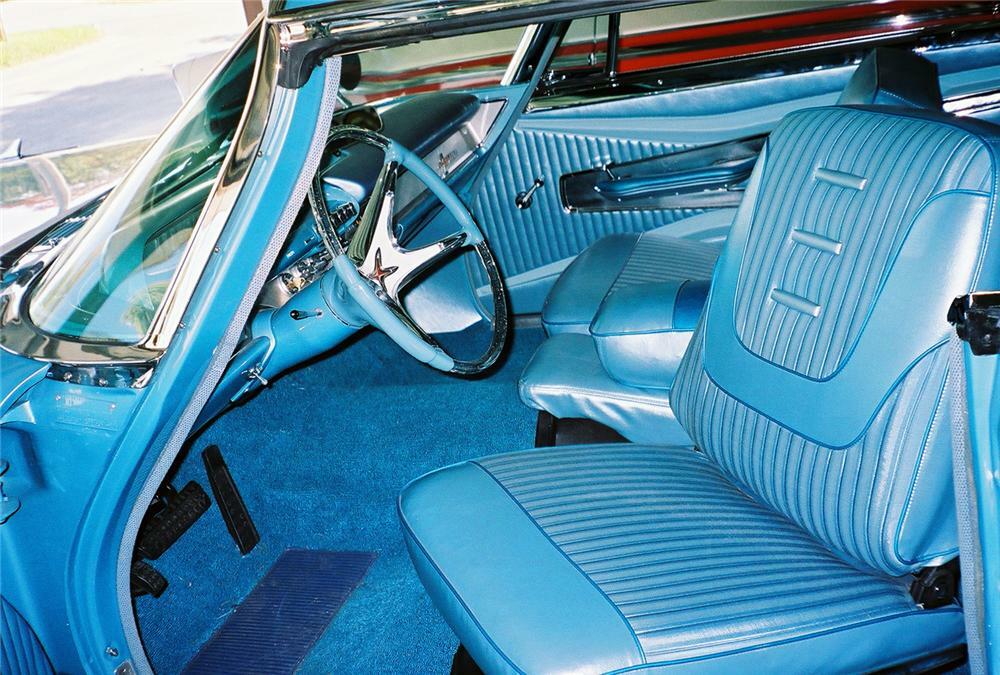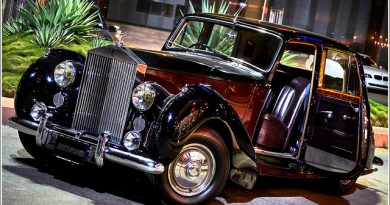1960 Dodge Polara
The Dodge Polara is an automobile introduced in the United States for the 1960 model year as Dodge’s top-of-the-line full-size car. After the introduction of the Dodge Custom 880 in 1962, the Polara nameplate designated a step below the full-sized best trimmed Dodge model; the Polara that year had been downsized to what was in effect intermediate, or mid-size status. In its various forms, the Polara name was used by Dodge until 1973, when its position in Dodge’s line-up was replaced by the Dodge Monaco.

Dodge’s first D-500 model debuted at the start of the 1956 model year. The origin of the name is a bit debatable, as it suggests the Indianapolis 500, but the Dodge Indy 500 pace cars and series of replicas were all 1954 models. It has also been opined that 500 was the number of cars to be built for acceptance as a production model. Confusing the matter is the crossed-checkered-flag medallion placed on the cars. Regardless, the D-500 package, available on the Royal Lancer hardtop coupe and convertible, comprised a high performance V-8 (260 or 276 brake horsepower, 315 cubic inch Hemi), suspension and drivetrain parts drawn from Chrysler and DeSoto, a larger exhaust and special ornamentation. Cars were given distinctive D-500 serial numbers. The package was extended to Coronet two-doors and later, without the heavy-duty suspension, to all models. Other versions of the D-500 engine ranged from 325 to 354 to 361 and 383 cubic inches from the 1957 to 1959 period.
This blue Polara 2 Door Hardtop has been treated to a restoration and has powered 383 cubic-inch V8 325 horsepower, pushbutton TorqueFlite three-speed automatic, power steering, power brakes, excellent brightwork.

The Polara was a new flagship model, intended to retrench Dodge’s traditional position in the middle-class market. Based on its list price, its primary target was probably the Pontiac Bonneville, which offered a similar combination of luxury and sporty flair for very similar money.

Like these cars, both 1960 full-sized Dodges continued with the make’s styling hallmarks of stacked “jet pod” tail lights, however, the size of the lights was greatly increased compared to the previous year’s lamps, with the lower lights set into the rear bumper. The design also incorporated Dodge’s trademark shortened tail fins, which included small vertical tail light lenses placed on the vertical surface at the back of the fin; again, the purpose of the shortened fin was meant to exaggerate the length of the “jet pods” holding the tail lights (The fins on Darts appeared to be longer.) Up front, the car featured a small grille comprised of eight stacks of chromed rectangles nested in a massive (and complex) front bumper assembly. As the top model in the line-up, the Polara featured better interior fabrics and trim treatments. Polaras also received more trim on the outside of the car, most notably a chrome stone guard aft of the rear wheel housings, a full-length chrome spear, and a wide chrome base to the chrome spear atop the headlight housings.




